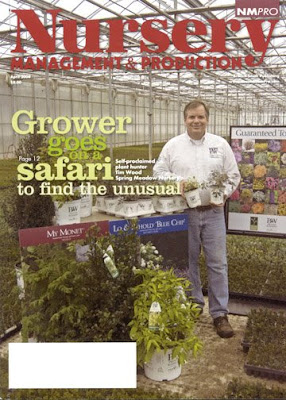
I just completed a short trip to the East Coast with stops in Rhode Island, Delaware, Pennsylvania and Maryland. The expedition was both interesting and entertaining. I started out in Rhode Island where I was interviewed for the television show Cultivating Life with Sean Conway. It was the first time I met Sean Conway in person so I was pleased to learn that he was more than just a television personality; he’s also an experienced horticulturist, garden designer and nurseryman. Just like me, Sean had a nursery that specialized in rare and hard to find plants. But unlike me, his nursery became a regular destination for magazine editors, authors and style conscious personalities. And unlike me, Sean became a repeat guest on Martha Stewart Living and NBC’s Today show. I, on the other hand, went on to became a guest on Cultivating Life with Sean Conway.
Being on TV is not new to me. I’ve done numerous television appearances, both locally and nationally. I’ve even appeared all of South Korea’s two television stations, so I can tell you from experience that Cultivating Life is first rate production. Sean and his entire production crew are skilled professionals and it was a pleasure to work with them. In TV Land this is not always the case. During a break, I told Sean about my most memorable television experience. It was a live, 30 minute television show and it did not take long to realize I was in big trouble. Five minutes prior to air the host asked me if I was a Master Gardener. When I responded "No", she touched my shoulder and replied in a low, sympathetic voice “I’m so sorry. Don’t you worry; I won’t mention that on the air.” And then, to make matters worse, about halfway into the show she started calling me Tim Cook. I couldn’t believe it. She continued on and on even while the producer frantically waved a big card board sign reading “His name is Tim Wood!!!” How embarrassing is that?
Anyway – if you want to see a first rate gardening show, check out Cultivating Life with Sean Conway. The show’s not live - it’s taped one year in advance - so you won’t get to see Tim Cook, but if you’re lucky you just might catch Tim Wood.
What's Your favorite Gardening Show? Tell me why.









